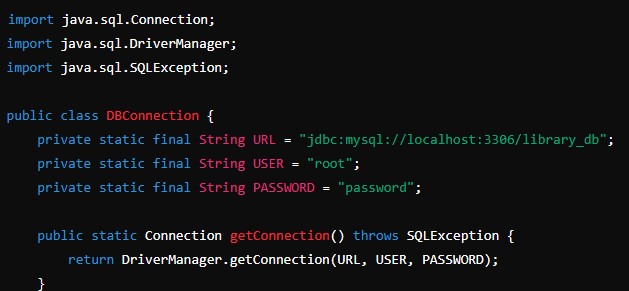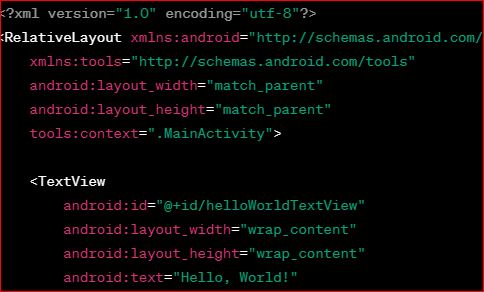Library Management System
Introduction
A library management system (LMS) is a software application designed to handle the routine operations of a library, such as cataloging books, tracking borrowed and returned books, managing member records, and more. Building a simple Library Management System is an excellent project for beginners in programming and software development, offering practical experience with database management, user interface design, and basic CRUD (Create, Read, Update, Delete) operations.
In this article, we will explore the essential components and steps required to build a simple library management system from scratch. This guide will provide a comprehensive overview, including the design considerations, technologies used, and a step-by-step implementation process.
Palindrome Checker in Java: A Comprehensive Guide
System Requirements and Design
Functional Requirements
Before diving into the implementation, it is crucial to outline the functional requirements of the system. The key features of our simple Library Management System will include:
- Book Management: Add, update, view, and delete book records.
- Member Management: Add, update, view, and delete member records.
- Borrowing and Returning Books: Track which books are borrowed by which members and manage due dates.
- Search Functionality: Search for books and members based on various criteria.
Non-functional Requirements
- Usability: The system should have an intuitive user interface.
- Reliability: The system should handle data accurately and consistently.
- Performance: The system should perform CRUD operations efficiently.
Technologies Used
For this project, we will use the following technologies:
- Programming Language: Java
- Database: MySQL
- User Interface: Java Swing
- IDE: IntelliJ IDEA or Eclipse
Database Design
Tables and Relationships
We will design a simple relational database with three main tables: Books, Members, and BorrowRecords.
- Books Table
book_id(Primary Key)titleauthorisbnpublisheryearcopies_available
- Members Table
member_id(Primary Key)nameaddressphone
- BorrowRecords Table
record_id(Primary Key)book_id(Foreign Key referencing Books)member_id(Foreign Key referencing Members)borrow_datereturn_date
Database Schema
CREATE TABLE Books (
book_id INT AUTO_INCREMENT PRIMARY KEY,
title VARCHAR(255) NOT NULL,
author VARCHAR(255) NOT NULL,
isbn VARCHAR(50) NOT NULL,
publisher VARCHAR(255),
year INT,
copies_available INT DEFAULT 1
);
CREATE TABLE Members (
member_id INT AUTO_INCREMENT PRIMARY KEY,
name VARCHAR(255) NOT NULL,
address VARCHAR(255),
phone VARCHAR(20)
);
CREATE TABLE BorrowRecords (
record_id INT AUTO_INCREMENT PRIMARY KEY,
book_id INT,
member_id INT,
borrow_date DATE,
return_date DATE,
FOREIGN KEY (book_id) REFERENCES Books(book_id),
FOREIGN KEY (member_id) REFERENCES Members(member_id)
);Implementation
Setting Up the Project
- Create a New Java Project: Open your IDE and create a new Java project named
LibraryManagementSystem. - Add Dependencies: Ensure you have the MySQL JDBC driver added to your project’s classpath for database connectivity.
Database Connection
Create a utility class DBConnection.java to manage the database connection.
import java.sql.Connection;
import java.sql.DriverManager;
import java.sql.SQLException;
public class DBConnection {
private static final String URL = "jdbc:mysql://localhost:3306/library_db";
private static final String USER = "root";
private static final String PASSWORD = "password";
public static Connection getConnection() throws SQLException {
return DriverManager.getConnection(URL, USER, PASSWORD);
}
}Data Access Objects (DAO)
Create DAO classes for each table to handle database operations.
BookDAO.java
import java.sql.*;
import java.util.ArrayList;
import java.util.List;
public class BookDAO {
public void addBook(Book book) {
String query = "INSERT INTO Books (title, author, isbn, publisher, year, copies_available) VALUES (?, ?, ?, ?, ?, ?)";
try (Connection conn = DBConnection.getConnection(); PreparedStatement stmt = conn.prepareStatement(query)) {
stmt.setString(1, book.getTitle());
stmt.setString(2, book.getAuthor());
stmt.setString(3, book.getIsbn());
stmt.setString(4, book.getPublisher());
stmt.setInt(5, book.getYear());
stmt.setInt(6, book.getCopiesAvailable());
stmt.executeUpdate();
} catch (SQLException e) {
e.printStackTrace();
}
}
public List<Book> getAllBooks() {
List<Book> books = new ArrayList<>();
String query = "SELECT * FROM Books";
try (Connection conn = DBConnection.getConnection(); Statement stmt = conn.createStatement(); ResultSet rs = stmt.executeQuery(query)) {
while (rs.next()) {
Book book = new Book(rs.getInt("book_id"), rs.getString("title"), rs.getString("author"), rs.getString("isbn"), rs.getString("publisher"), rs.getInt("year"), rs.getInt("copies_available"));
books.add(book);
}
} catch (SQLException e) {
e.printStackTrace();
}
return books;
}
// Other CRUD operations can be implemented similarly
}MemberDAO.java
import java.sql.*;
import java.util.ArrayList;
import java.util.List;
public class MemberDAO {
public void addMember(Member member) {
String query = "INSERT INTO Members (name, address, phone) VALUES (?, ?, ?)";
try (Connection conn = DBConnection.getConnection(); PreparedStatement stmt = conn.prepareStatement(query)) {
stmt.setString(1, member.getName());
stmt.setString(2, member.getAddress());
stmt.setString(3, member.getPhone());
stmt.executeUpdate();
} catch (SQLException e) {
e.printStackTrace();
}
}
public List<Member> getAllMembers() {
List<Member> members = new ArrayList<>();
String query = "SELECT * FROM Members";
try (Connection conn = DBConnection.getConnection(); Statement stmt = conn.createStatement(); ResultSet rs = stmt.executeQuery(query)) {
while (rs.next()) {
Member member = new Member(rs.getInt("member_id"), rs.getString("name"), rs.getString("address"), rs.getString("phone"));
members.add(member);
}
} catch (SQLException e) {
e.printStackTrace();
}
return members;
}
// Other CRUD operations can be implemented similarly
}BorrowRecordDAO.java
import java.sql.*;
import java.util.ArrayList;
import java.util.List;
public class BorrowRecordDAO {
public void borrowBook(int bookId, int memberId) {
String query = "INSERT INTO BorrowRecords (book_id, member_id, borrow_date) VALUES (?, ?, CURDATE())";
try (Connection conn = DBConnection.getConnection(); PreparedStatement stmt = conn.prepareStatement(query)) {
stmt.setInt(1, bookId);
stmt.setInt(2, memberId);
stmt.executeUpdate();
} catch (SQLException e) {
e.printStackTrace();
}
}
public void returnBook(int recordId) {
String query = "UPDATE BorrowRecords SET return_date = CURDATE() WHERE record_id = ?";
try (Connection conn = DBConnection.getConnection(); PreparedStatement stmt = conn.prepareStatement(query)) {
stmt.setInt(1, recordId);
stmt.executeUpdate();
} catch (SQLException e) {
e.printStackTrace();
}
}
public List<BorrowRecord> getAllBorrowRecords() {
List<BorrowRecord> records = new ArrayList<>();
String query = "SELECT * FROM BorrowRecords";
try (Connection conn = DBConnection.getConnection(); Statement stmt = conn.createStatement(); ResultSet rs = stmt.executeQuery(query)) {
while (rs.next()) {
BorrowRecord record = new BorrowRecord(rs.getInt("record_id"), rs.getInt("book_id"), rs.getInt("member_id"), rs.getDate("borrow_date"), rs.getDate("return_date"));
records.add(record);
}
} catch (SQLException e) {
e.printStackTrace();
}
return records;
}
// Other CRUD operations can be implemented similarly
}Models
Create model classes to represent the data.
Book.java
public class Book {
private int bookId;
private String title;
private String author;
private String isbn;
private String publisher;
private int year;
private int copiesAvailable;
public Book(int bookId, String title, String author, String isbn, String publisher, int year, int copiesAvailable) {
this.bookId = bookId;
this.title = title;
this.author = author;
this.isbn = isbn;
this.publisher = publisher;
this.year = year;
this.copiesAvailable = copiesAvailable;
}
// Getters and Setters
}Member.java
“`java
public class Member {
private int memberId;
private String name;
private String address;
private String phone;
public Member(int memberId, String name, String address, String phone) {



